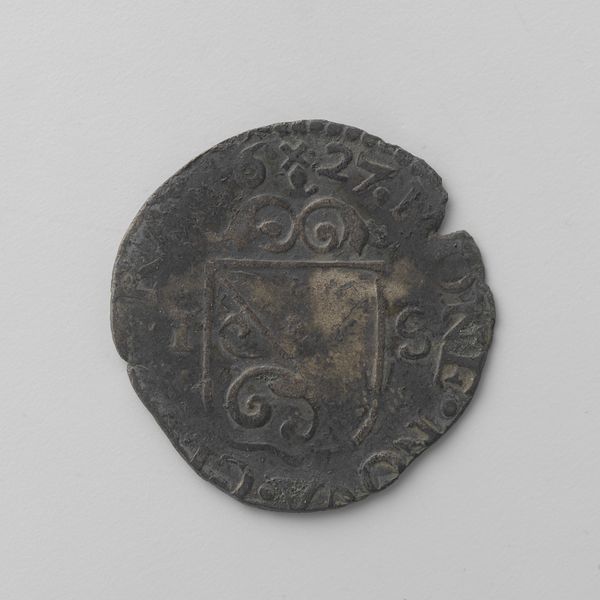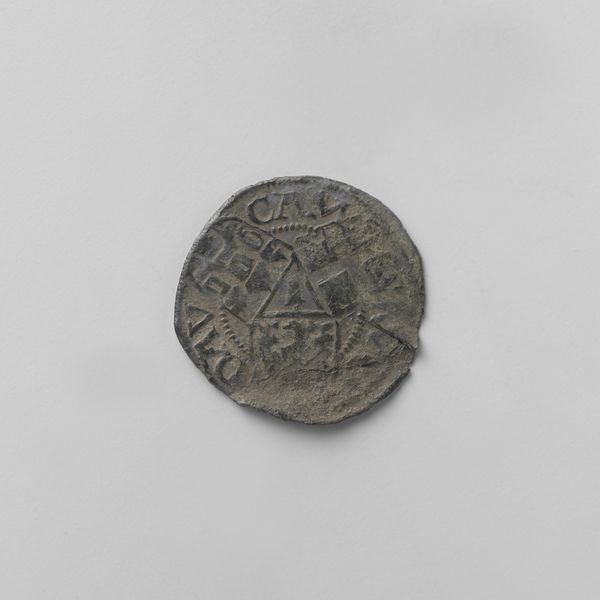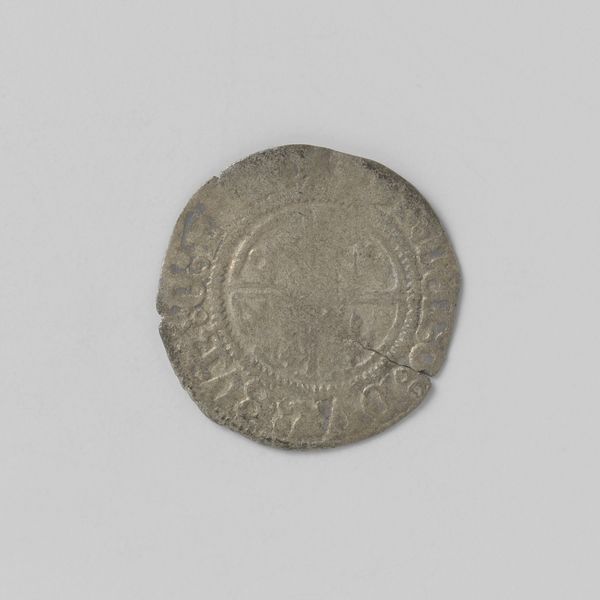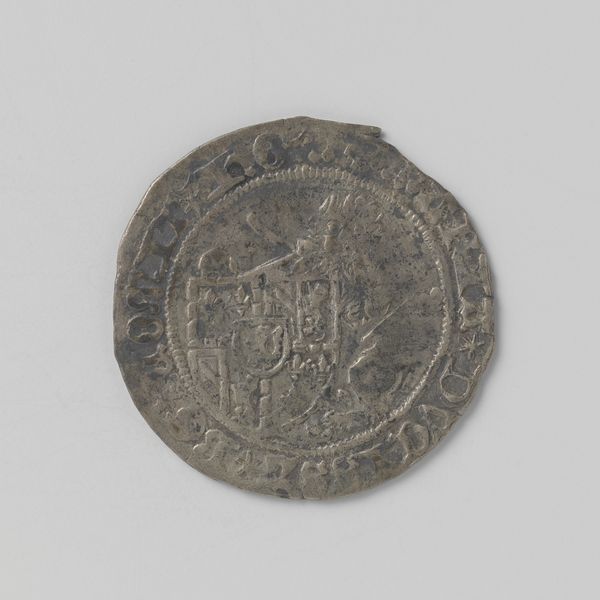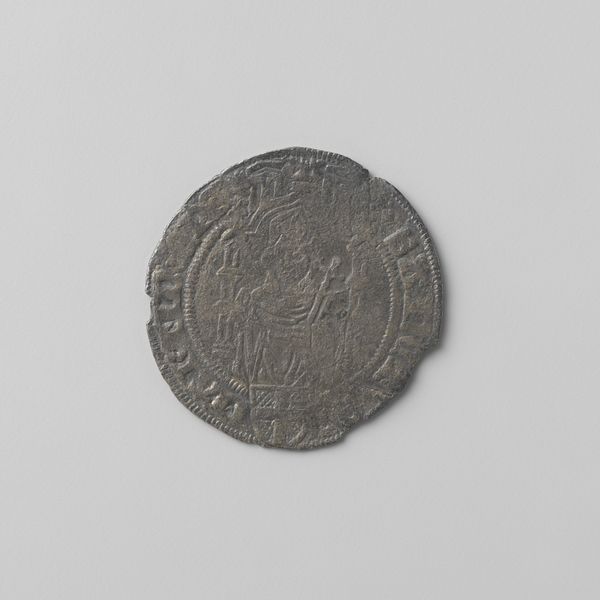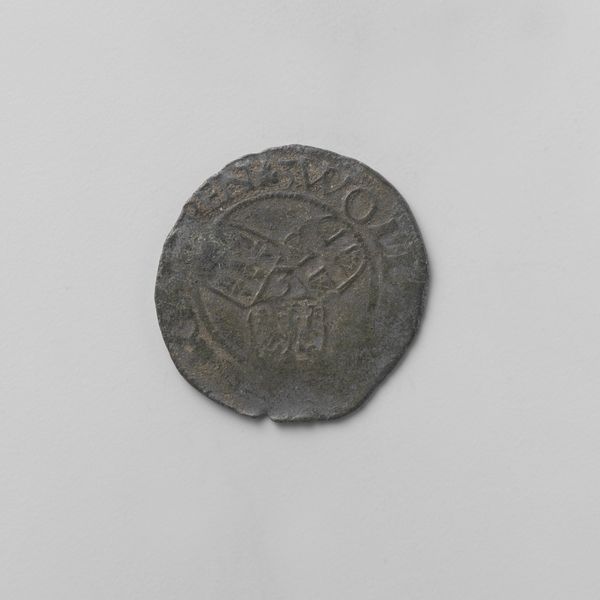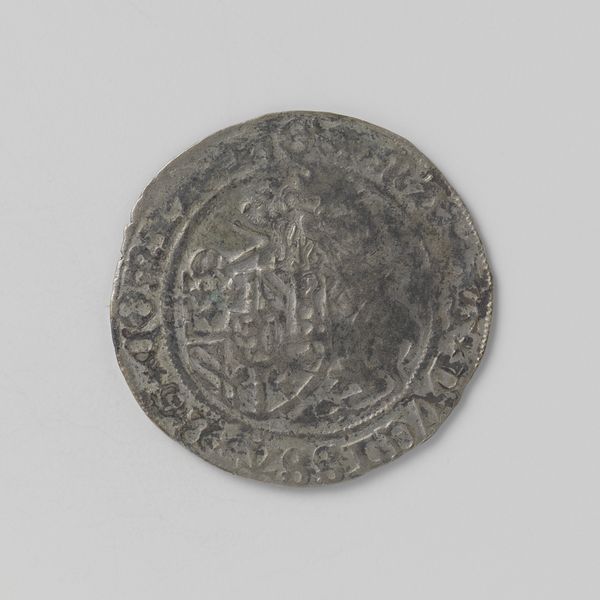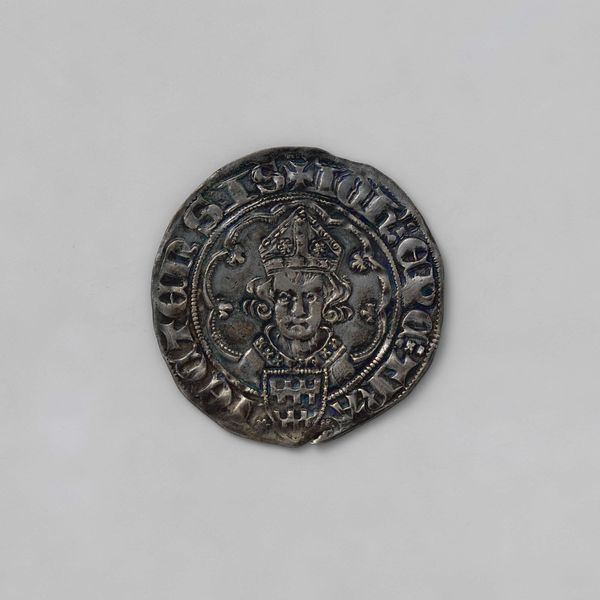
metal, engraving
#
medieval
#
metal
#
geometric
#
history-painting
#
coin
#
engraving
Dimensions: diameter 2.6 cm, weight 2.64 gr
Copyright: Rijks Museum: Open Domain
This silver coin was made in Utrecht in 1479 under the authority of its bishop, David of Burgundy. Religious imagery on coinage was common, but it also served as a potent symbol of the bishop's temporal power. David was an illegitimate son of Phillip the Good, Duke of Burgundy, and his appointment reflects the growing influence of Burgundy over the Netherlands at this time. The Burgundian dukes were adept at placing family members in positions of power within the church, which in turn served their political interests in the region. Coins like this are not just economic objects; they're historical documents. By studying them alongside other sources, such as church records and political treatises, we can gain a richer understanding of the complex interplay between religion, politics, and economics in the late medieval Netherlands.
Comments
No comments
Be the first to comment and join the conversation on the ultimate creative platform.



